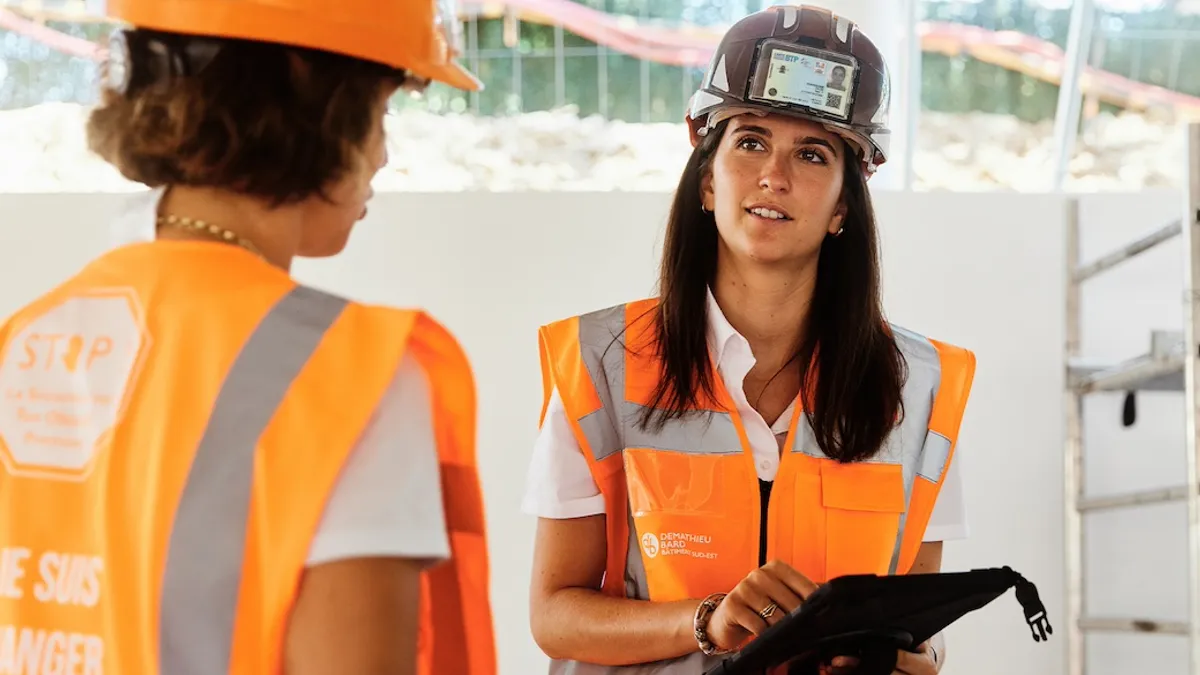The number of women in construction in the U.S. hit the 1 million mark in 2022, a first since data started being collected in 1964. Although this milestone represents progress, the percentage of women working in construction still remains low compared to other industries.
While construction jobs are increasingly available, an analysis of BLS data by the Associated Builders and Contractors (ABC) shows construction employees are quitting at twice the rate of layoffs or discharges. One of the key strategies in addressing the construction labor shortage is recognizing the value and importance of a diverse workforce, where recruiting and retaining talent remains a significant challenge.
The industry will see more success in retaining women in construction by focusing on three critical stages for career progression: early career, family planning and career advancement.
Early career
From the first day on the job, inclusive PPE can be a powerful tool for recruiting and retaining women entering the industry. During an interview with Procore, Chief Risk Officer at Insurate Abby Ferri, said, “If an employer asks their new employee for their PPE sizing and preference on day one, they’re demonstrating the value of their employee’s input. On the flip side, if a new employee is handed a ‘one size fits all’ PPE with no other option, it may feel like they’re being treated as just a number.”
An ill-fitting safety vest can also negatively impact women’s confidence on the jobsite and their sense of presence and authority. Providing equal treatment to women, including access to proper fitting PPE, is critical for retaining talent.
Family planning
While the construction industry wants, and needs, to hire more women, childcare is often viewed as a barrier. According to the National Center for Construction Education and Research (NCCER) In Her Own Words Report, women surveyed overwhelmingly felt that the construction industry does not offer flexible work hours. Women are often their family’s primary caretaker, and they feel like the industry does not offer the flexibility they need to accommodate medical appointments, education, or childcare, for example.
This inequity can be felt by women working on the job site. Women returning to work after childbirth, for example, may require space to comfortably and safely express milk. Sometimes, this space is sitting in a car during a short break, using a mobile pump and a cooler.
In late 2022, the federal PUMP Act was passed to protect nursing mothers in the workplace. Some construction companies are now providing lactation pods at the job site to create a safe space for nursing women, which also helps to build an inclusive company culture, and enable women to work more efficiently, while improving their ability to care for their family’s needs.
And, as the construction industry continues to digitize, it creates opportunities for job roles to shift and expand, which may create new career paths for women. Technology can enable remote work, provide opportunities for flexible working hours and create more work-life balance to those in both the office and the field.
Career advancement
Despite the recent milestones, women in construction are still underrepresented at the leadership level. Women make up only about 14% of staff executive positions and 7% of line executive positions in construction. Increased representation at the leadership level, coupled with more opportunities for allyship and sponsorship and intentional succession planning, can aid in keeping women in the industry as they’d have more opportunities for career advancement.
The data behind why women in construction leave needs improvement, but a 2022 Construction Talent Retention Survey suggests that the main retention drivers for women in construction are career development, work-life balance and a sense of belonging.
By focusing on these three stages, construction can improve its ability to not only keep women in the workforce, but intentionally make changes to advance their careers. From implementing technology to navigating succession planning, there are clear strategies that will benefit the entire industry and help reduce the labor shortage.
To learn more strategies for retaining women in construction, watch “From Sticky Floors to Open Doors: Lessons in Retaining Women in Construction.”










